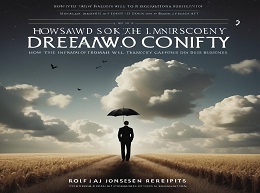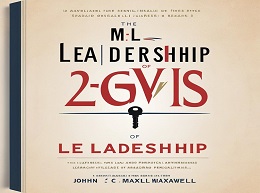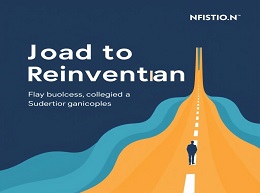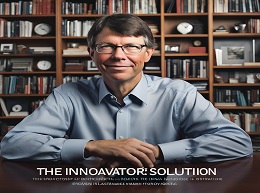The Commitment Engine: Making Work Worth It
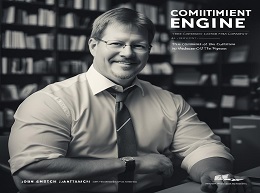
A Blueprint for Engaging Workplaces
John Jantsch's "The Commitment Engine: Making Work Worth It" is a profound exploration of how businesses can cultivate a culture of commitment and passion among their employees. Jantsch, a renowned marketing consultant and author, delves into the intricacies of creating a workplace where people are not only motivated but also genuinely committed to the company’s mission. This review will analyze the core themes, provide illustrative examples, and highlight actionable insights from the book.
Defining Commitment in the Workplace
Jantsch begins by defining commitment as a blend of passion, purpose, and genuine connection to the work and the organization. Commitment goes beyond mere job satisfaction; it encompasses a deep-rooted belief in the company’s values and a personal investment in its success.
Patagonia's Environmental Ethos
Patagonia, the outdoor clothing company, exemplifies this commitment. Employees are deeply connected to the company’s mission of environmental conservation, which is evident in their engagement and advocacy for sustainable practices.
Purpose: The Foundation of Commitment
A clear and compelling purpose is crucial for fostering commitment. Jantsch argues that companies must define and communicate their purpose effectively to align their workforce.
TOMS Shoes' One-for-One Model
TOMS Shoes built its business model around a clear purpose: for every pair of shoes sold, a pair is donated to a child in need. This purpose not only drives customer loyalty but also inspires employee dedication.
Leadership’s Role in Fostering Commitment
Leadership plays a pivotal role in creating a culture of commitment. Leaders must embody the company’s values and lead by example, fostering an environment where employees feel valued and motivated.
Howard Schultz and Starbucks
Howard Schultz, the former CEO of Starbucks, is known for his commitment to employee welfare, offering comprehensive benefits and fostering a supportive workplace culture. His leadership has been instrumental in creating a committed workforce.
Building a Sense of Belonging
Jantsch emphasizes the importance of belonging, suggesting that when employees feel they are part of a larger community, their commitment to the organization strengthens.
Google’s Collaborative Environment
Google’s emphasis on collaboration and open communication creates a sense of belonging among its employees. The company’s numerous team-building activities and inclusive policies help maintain a high level of employee commitment.
Crafting and Sharing Stories
Stories are powerful tools for building commitment. Jantsch advocates for businesses to craft and share stories that resonate with employees and customers alike, creating a strong emotional connection to the company’s mission.
Ben & Jerry’s Social Justice Initiatives
Ben & Jerry’s uses storytelling to highlight its commitment to social justice. By sharing stories of their activism and community involvement, they foster a sense of pride and commitment among their employees.
Empowering Employees
Empowerment is key to fostering commitment. Jantsch suggests that businesses should empower their employees by giving them autonomy, encouraging innovation, and recognizing their contributions.
3M’s 15% Rule
3M’s famous 15% rule allows employees to spend 15% of their time on projects of their own choosing. This policy has led to numerous innovations and has significantly enhanced employee commitment by fostering a sense of ownership and creativity.
Continuous Learning and Development
Investing in employee development is another critical strategy for enhancing commitment. Jantsch argues that providing opportunities for growth and learning helps employees feel valued and invested in the company’s success.
IBM’s Career Development Programs
IBM offers extensive career development programs, including training and mentorship opportunities, which help employees advance their skills and career paths. This investment in personal growth fosters long-term commitment to the company.
Key Metrics for Assessing Commitment
Jantsch highlights the importance of measuring commitment to understand its impact on the organization. Key metrics might include employee engagement scores, turnover rates, and customer satisfaction levels.
Gallup’s Q12 Employee Engagement Survey
Gallup’s Q12 survey is widely used to measure employee engagement. Companies that regularly use such tools can gauge the effectiveness of their commitment strategies and make data-driven improvements.
Overcoming Common Obstacles
Despite the best efforts, fostering commitment can be challenging. Jantsch discusses common obstacles such as organizational inertia, lack of clear communication, and resistance to change.
Addressing Resistance to Change
One company faced resistance when implementing new collaborative technologies. By involving employees in the decision-making process and providing thorough training, they managed to overcome the initial resistance and fostered a more committed and adaptive workforce.
The Path to a Committed Workforce
"The Commitment Engine: Making Work Worth It" provides a comprehensive guide for businesses seeking to cultivate a committed and passionate workforce. John Jantsch’s insights, coupled with real-world examples, illustrate the transformative power of commitment in driving business success.
Final Thoughts: A Call to Action
Jantsch’s work is a call to action for leaders and organizations to prioritize commitment. By fostering a culture of purpose, belonging, and continuous growth, businesses can not only enhance employee satisfaction but also achieve extraordinary success. "The Commitment Engine" is an essential read for anyone looking to make work truly worth it for themselves and their teams.


